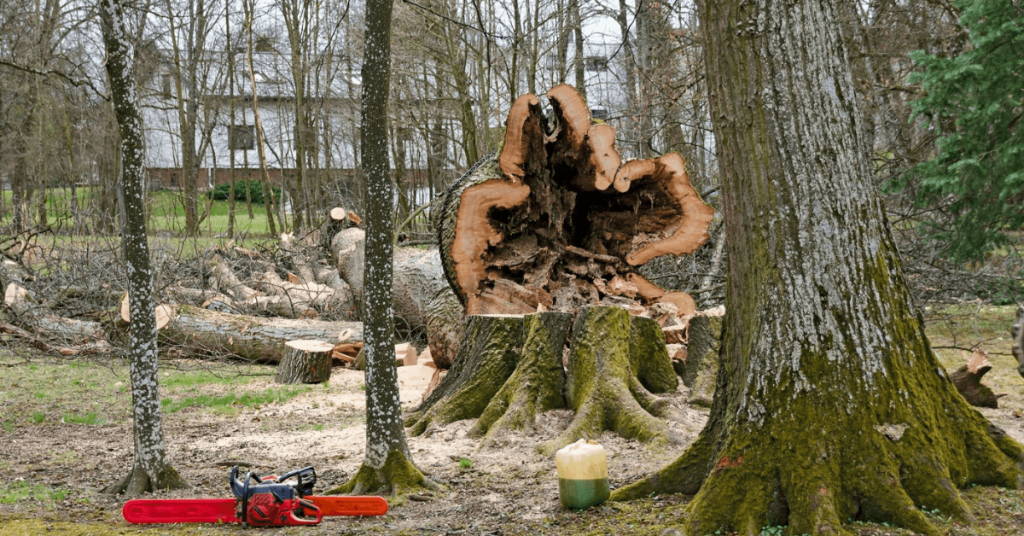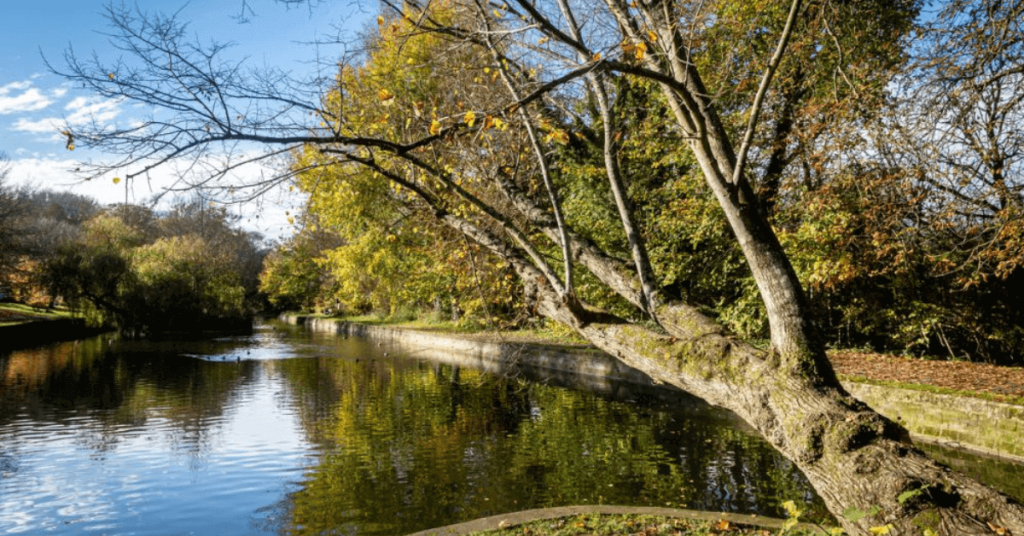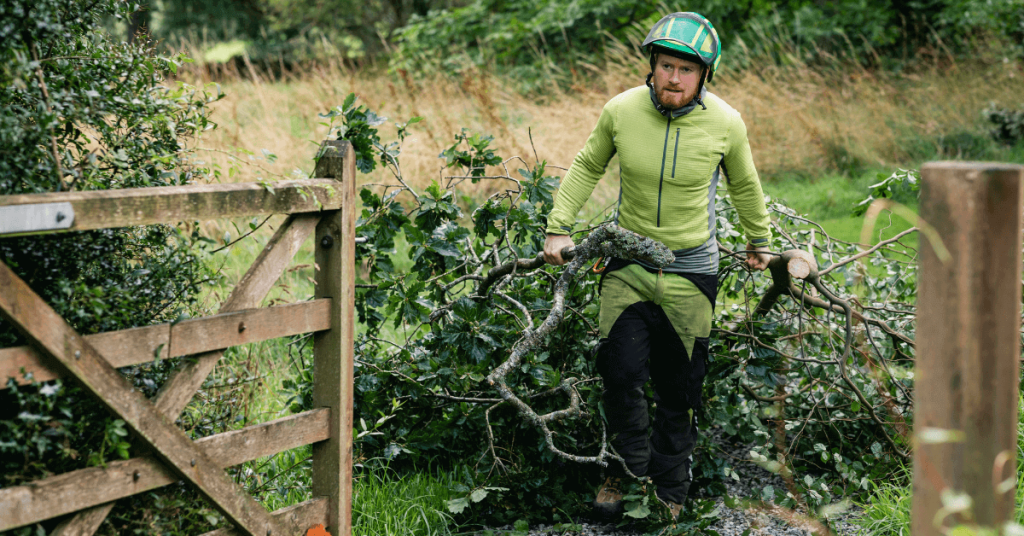Having a tree in your yard can provide numerous benefits. Removing a tree from your property can be difficult, as trees provide many benefits such as shade, oxygen and aesthetic appeal. However, certain situations may be necessary to remove a tree such as if the tree is dead, diseased or poses a safety hazard.
In this blog post, we’ll discuss some of the signs that indicate it’s time to remove your tree from your property. We’ll also explore how to correctly handle the removal process to keep yourself safe from potential hazards.
Read on to learn more about tree removal as well as the process and considerations involved in doing so.
8 Signs That Indicate It’s Time to Remove a Tree
Certain signs indicate it’s time to remove a tree from your property. Some of these include: Posing a safety hazard
1) Dead or dying tree
A dead or dying tree can be a hazard to your property and those around it. If the tree is beyond saving, it should be removed from your property as soon as possible.
2) Diseased tree
Trees that are infected with fungi, insects or diseases can spread the infection to other trees on your property. If you notice signs of disease such as discolored leaves or bark, it’s time to remove the tree.
3) Leaning tree
A leaning tree is an indication that the root system may not be strong enough to support the weight of the tree. If the tree is leaning at an alarming angle, it should be removed before it falls and causes damage.
4) Cracks in the trunk
Cracks in the trunk, especially those that extend around the tree, can indicate a weak structure and should be assessed by an arborist. If removal is recommended, follow their advice for the safety of you and your property.
5) Obstruction or shading
Trees can obstruct views or shade gardens or other outdoor areas. If this is an issue on your property, it may be necessary to remove the offending tree.
6) Personal preference
Sometimes a tree simply doesn’t fit in with the aesthetics of a property. Removing it and replacing it with a different species is often the best option.
7) Unstable trunk
A trunk that is unstable or appears to be soft and spongy can indicate rot or decay. If this is the case, it would be best to have the tree removed before it poses a hazard.
8) Fungal growth
Fungi growing at the base of a tree can signal root damage and should be a cause for concern. If the fungi are present, it’s time to contact an arborist.
No matter what signs are present, always consult a professional before attempting to remove a tree from your property. They can provide you with expert advice and help ensure that the job is done safely and correctly.
Considerations Before Removing A Tree
There are a few key considerations to keep in mind before removing a tree.
- Environmental impact: Before deciding to remove a tree, consider the environmental impact of doing so. If the tree is providing shade and oxygen or helping with erosion control, it may be best to keep it in place.
- Cost: Tree removal is not cheap. There are also costs associated with stump grinding and potential replanting if desired. It’s important to get an estimate from a professional arborist before making any decisions.
- Replacement of the tree: If removing a tree is necessary, consider planting a new tree in its place. A younger, smaller tree can fill the same role as the former one and help provide shade and oxygen for years to come.
- Legal and regulations: Before removing a tree, check with local laws to see if there are any restrictions or permits needed for doing so. Some cities may have ordinances that require special permission for removal.
- Long-term effects on the property: Removing a tree can also affect your property in the long term. It can increase sunlight and heat, which can affect nearby vegetation or it could lead to soil erosion. Consider the potential consequences of removal before making a decision.
Process of Removing A Tree
The process of removing a tree can be quite complex, depending on the size and location of the tree. It is important to note that it is not recommended to attempt to remove a tree without professional help.
Here are the steps that should be taken when removing a tree:
- The first step in removing a tree is to assess the situation to decide what is needed and how it should be done. This includes determining the size of the tree, its location and any other factors such as potential hazards.
- After the assessment of the tree is made, it is important to contact a professional arborist or tree removal company. This will ensure that the job is done correctly and safely.
- The arborist or tree removal company will then inspect the area for any safety concerns and provide an estimate for the job.
- Once the estimate is accepted, the arborist or tree removal company will begin by cutting down the tree. Depending on the size of the tree and its location, this may involve using professional equipment such as a crane, chainsaw or climbing harness.
- After the tree has been cut down, the remaining stump will be removed. This can be done with a special machine called a stump grinder, which is designed to grind down the tree’s roots.
- Finally, the area may need to be cleaned up and any debris removed from the property. Depending on the situation, this may require additional equipment or labor.
Removing a tree can be a difficult and dangerous task, so it is important to make sure that it is done correctly. By following the steps outlined above, you can ensure that your property remains safe and your trees are removed properly.
Also Read: How Are Trees Tortured?
Potential risks and hazards associated with tree removing
- The tree may often be larger than it appears, resulting in unanticipated complications. Attempting to remove a tree without the proper safety equipment can also be a major hazard.
- Chainsaws, ladders and other tools used to remove trees can be hazardous if the proper precautions are not taken.
- Additionally, depending on the situation, there may be power lines or underground utilities that could pose an additional safety concern.
- Attempting to remove a tree without professional help can leave you vulnerable to serious injury or worse.
- Therefore, it is important to consult a professional tree service if you need help removing a tree from your property. Professional arborists will be able to assess the situation and provide advice on how best to proceed with the task safely.
- They will also have access to specialized equipment such as cranes that can make the job much easier and safer.
Final Words
The decision to remove a tree should be based on a variety of factors, including its overall health, structural integrity and location. If a tree is diseased or dying, it should be removed as soon as possible to prevent potential hazards. If a tree is structurally unsound or in a location where it poses a risk to people or property, it should also be removed.
Tree removal is a big decision that should not be taken lightly. Knowing when to remove a tree can save you time and money in the long run. If you are unsure about whether or not to remove your tree, it is always best to consult with a professional.
They will be able to give you the most accurate assessment of your tree’s health and what needs to be done to ensure its longevity. Thanks for reading and we hope this article was helpful!




